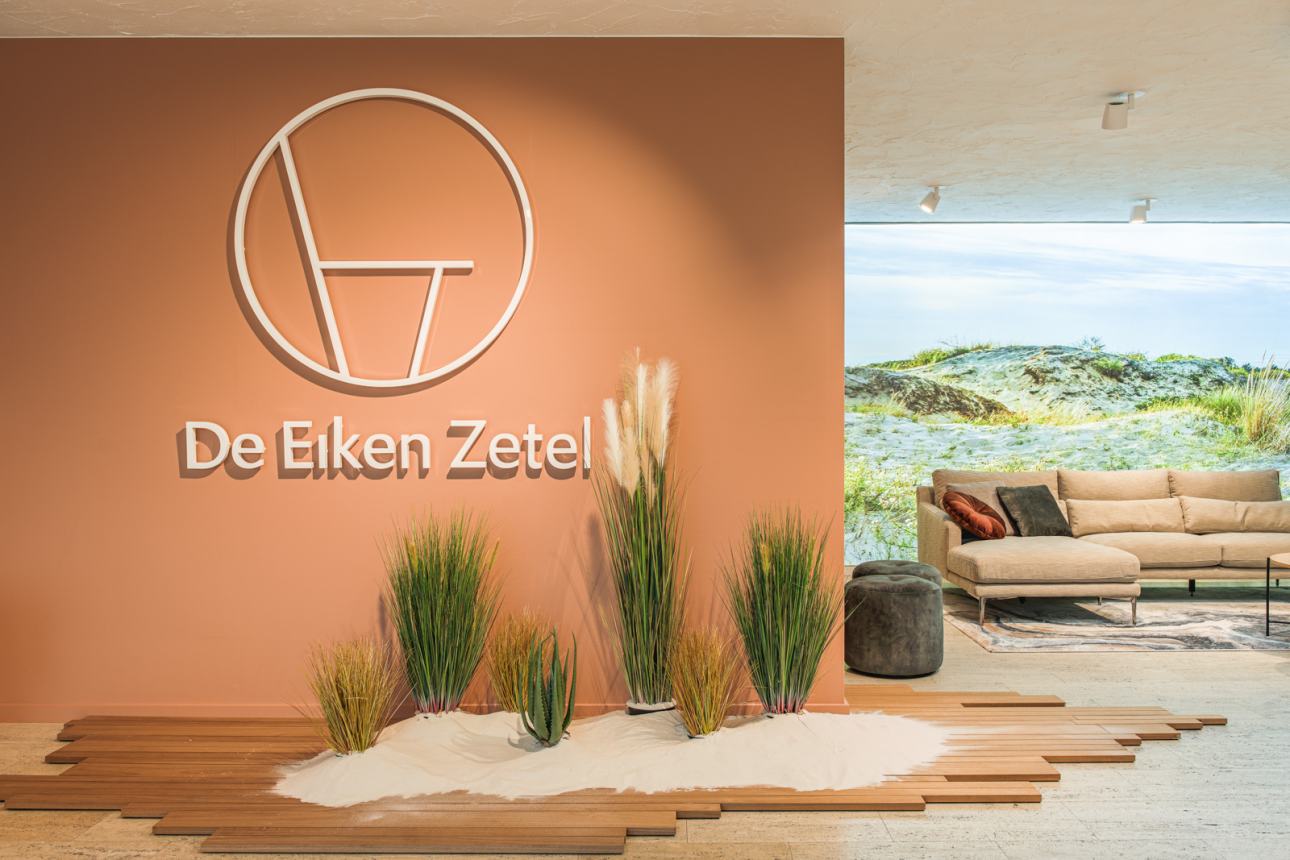1. Involve your interior designer at the building shell stage
Clients who call on our interior designers for the design of their company interiors are in many cases engaged in a completely new construction or a thorough renovation. We often notice that their request only ends up in our mailbox when the construction is already in full swing. That’s not a disaster, of course. But we have noticed that sometimes opportunities are missed in such cases. An interior designer works from a different angle than a structural designer. He or she will undoubtedly add surprising elements to the design.
Does your brand need a sleek, modern environment? Or would a traditional building work better? Are you going for large glass windows for optimal light? Or is a cosy country feel better suited to your house style? Allow cross-pollination between your interior designer and your structural designer!
2. Get your brand identity and branding right

Whether you have one shop in the city or different buildings and spaces across the country, when it comes to business premises, consistency is always important. Don’t have a clear corporate identity yet? Or is your brand ready for a rebranding? Get it done before you get started! This is the basis for your ‘interior branding’ or brand perception in your interior. Your interior designer applies the same rules as your graphic designer. Company colours and logo must be reflected in the design, everything must form a uniform whole.
3. Brief your interior designer on the ‘why’ of your corporate interior
Tell your interior designer in detail about your mission and vision and what role your corporate interior plays in that. Why is a specific space there? Who will use it? From there, your interior designer can determine a design that connects the user (prospects, customers, employees, etc.) with the purpose of the space.
For example, suppose you are a distributor of electrical installation material and you want to set up a training centre where you regularly give workshops and product demonstrations to installers. That same space should also serve as a flexible workspace for your salespeople at other times. So in that space you want to create an experience around your brand, make users feel good and inspire them. Indirectly, therefore, the space will also have to contribute to better results.
Based on this important information, your interior designer will make specific choices in terms of materials and design. Think of easy to maintain materials because of the intensive use and a spacious kitchen for providing visitors with food and drinks in a pleasant environment. Also consider additional technology such as WiFi, LED screens, sufficient electrical connection points. And of course, there will also need to be strong ‘branding’ in the space. Think of screening advertisements on the LED screens, furniture in your brand colours, etc

4. Give your interior designer creative freedom when designing your corporate interior
Creative freedom is of great importance when coming up with innovative concepts. So, try not to take into account restrictions such as your budget or the size of the space during the briefing itself. Sometimes you don’t dare to mention certain things that you’d love to have because you think they won’t fit into your budget. But this is how important information for your interior designer can be lost. He or she may be able to come up with a way of fitting it into your budget.
For example, if you want to set up an experience room where you show your products to your public, then for budgetary reasons you might not spontaneously think of decorating your entrance hall. But including the entrance in the design could be interesting for the overall picture. Then your visitor really gets an experience from the time they enter your premises to when they leave. And another good tip: Give your interior designer the freedom to add a touch of authenticity. A striking detail, such as a grand piano, a shiny old-timer or any other item that ties in with your brand story, will always stay with your visitor.
Once again, there’s no need to make a sketch in advance. All you and your team need to do is dream. Just tell us what the purpose of the space is and what your budget is. That’s it! A (good) interior architect always knows how to turn this into a feasible design. So have faith. It’ll all work out.